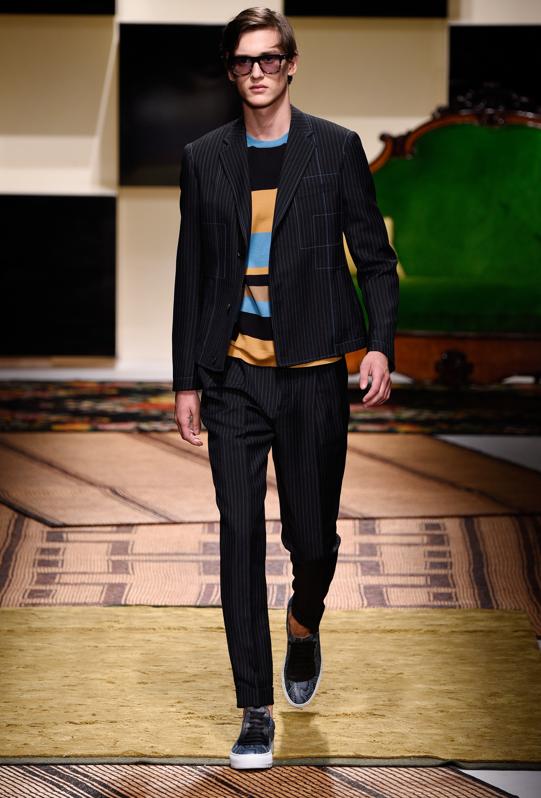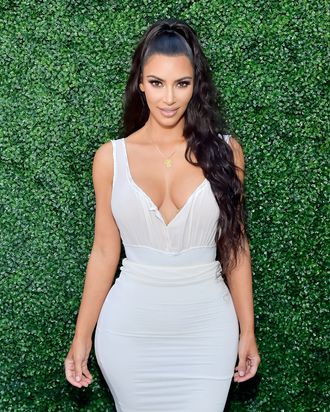MILAN, ITALY - JUNE 21: A model walks the runway during the Salvatore Ferragamo fashion show as ... [+]
Getty ImagesLet’s face it, Generation Z is not subscribing to the universal codes of office attire that had once been imposed upon American men. And this resistance is raising a lot of questions for business professionals today. As I see it, Gen Z is a testament to the style transition currently happening at the workplace. I have to say, over the last few decades, the winds of change seemingly swept through the menswear industry, with the force of a category 5 hurricane. But it wasn’t until about 2011 when men had taken the chance to come to the office dressed in a suit and luxury sneakers. For Manhattanites like me, traversing NYC day-in day-out, soon became a joy. In fact, it has been a turning point in the history of menswear ever since.
I witnessed this menswear changing-of-the-guard first hand and before anyone knew it, the majority of men conformed to the comfortable style with ease. One footwear vendor even presented me a shoe that had the comfort of a sneaker, so much so, that one could scale a fence and run ten city blocks and still feel like a champion.
Despite an increase in fashion knowledge in comparison to years past, there remains a noticeable difference in office-attire leniency. If you just take a peek into any office today, you’ll be hard-pressed to find a full-on suit look from years ago. Don’t get me wrong, power suits are still very much in demand for top-management executives as well as more conservative disciplines. But dress code company policies are, without question, much more casual as Gen Z enters into the workforce —with an individualist style to be reckoned with.
As technology continues to change the way companies and people do business, it makes more sense to fit the needs to the professional workplace lifestyle. If you are wondering what this means for new generations entering the workforce, you’re not alone. The onset of COVID-19 accelerated remote office hours seemingly into a new normalcy.
MORE FOR YOU
Nowadays, Millennials and Gen Z are aiming to reach exclusive platforms with entrepreneurial goals. At this point, it is important to assess and decide what type of dress code is effective for you and your company. Co-branding and the fashion business has been segueing into endless possibilities. More to the point, in removing corporate fashion barriers, data proves that it allows for a better flow of ideas, and can improve job performance— while lending a feeling of unity.
When dressing for success, I suggest that you dress for the culture of the business you are working at. Plain and simple; that means dressing the brand culture and not above it. Dress for what you are representing and what makes you most comfortable to conduct business in while at work. Dress for success should articulate the belief that what you wear should be given much thought. Today "impression management" is the new term for Gen Z.
More recently, I met a young entrepreneur whose expertise is being a creative facilitator— linking brand codes and cultures together in unison to reach broader audiences, while merging separate groups into working as one. And as I stated above, when dressing for a brands culture, be mindful of which brand you align yourself with while merging a multi-brand project.
When referring to dressing for success with respect to brand culture, entrepreneur Josh Rabbany works on various platforms. You see, Josh is a visionary entrepreneur; this is a professional who has the ability and charisma to bring brands and people together by creating innovative projects based on real value.
Early on, Rabbany worked in the music space as an advisor to some of Hollywood’s biggest talents including DJ Khaled, Future and A$AP Rocky. In addition, he aims to capitalize on co-branding initiatives that have proven to be successful in fashion, music and art. To his credit, he has nurtured these relationships into a full-fledged creative consultancy known as The JMR Group. The LA based agency prides itself on having a strong focus on creative business advisory on fashion and music brands— even real estate development. And in speaking of dressing for success and new codes that are accepted at the workplace, Rabbany is wearing all the right hats.
One of Josh’s notable projects was when he was commissioned by Michelle Obama to curate an artist for an installation at Union Square Market. Soon thereafter, he was able to connect the First Lady with Mr. Brainwash for the very successful art/fashion project. The co-branding project was so successful that later that year, Josh was invited to The White House— to join in celebration at the annual holiday event.
To reach success in co-branding fashion you must understand the importance of the layers that make your style unique and capable of telling your story. This is where reality meets intuition and the creative process begins. Rabbany was not only commissioned by Beats by Dre to liaise their brand with DJ Khaled & RETNA but rather has a handful of luxury fashion brands ready to have him help tell their story.
MILAN, ITALY - JUNE 18: A model walks the runway at the Canali show during Milan Men's Fashion Week ... [+]
Gamma-Rapho via Getty ImagesOn the real estate front, Josh is very excited about The JMR Group’s recent acquisition of 543 N. Fairfax, a 22,000 square foot site in the heart of the Fairfax district, that formerly housed The National Council for Jewish Women.
Rabbany aims to achieve more successful collaborations within the fashion and entertainment industry. And at this very moment, there are a handful on the horizon. As the owner of JMR Group, Josh’s philosophy informs the way he approaches every aspect of his business. He is passionate about the diversity of the business. He truly enjoys working together with other creatives to conceptualize what he envisions. “It’s just another day in paradise!” says Rabbany.
Like most millennials and Gen Z in the workforce, Josh is looking forward to what the 2021 holds in-store for him as well as his collaborators. All eyes on a generation that continues forward on a fascinating journey with new alliances and acquisitions through 2021 and beyond.
Dress for Success changes per work situation: Josh Rabbany was commissioned by Beats by Dre to liase ... [+]
Courtesy of The JMR Group,Early on, Rabbany worked in the music space as an advisor to some of Hollywood’s biggest talents including DJ Khaled, Future and A$AP Rocky. In addition, he aims to capitalize on co-branding initiatives that have proven to be successful in fashion, music and art. To his credit, he has nurtured these relationships into a full-fledged creative consultancy known as The JMR Group. The LA based agency prides itself on having a strong focus on creative business advisory on fashion and music brands— even real estate development. And in speaking of dressing for success and new codes that are accepted at the workplace, Rabbany is wearing all the right hats.
I recently had the privilege to speak with Josh Rabbany CEO at JMR Group about how dressing for success takes on a whole new meaning when he is bringing together artists and growing relationships for the greater good, why keeping it personal makes all the difference in the rise to corporate ascension and why he believes that Hollywood has always set a style precedent that doesn’t adhere to the usual boundaries of menswear!
Dress For Success Takes On A Whole New Meaning: JOSH RABBANY: CEO and Founder of JMR Group
Courtesy of The JMR GroupJoseph DeAcetis: Talk to Forbes about how as an entrepreneur, you developed a business by linking and networking some of the top people in the style and entertainment industry?
Josh Rabbany: I started out in this industry at 17 years old. Even then, I was of the belief that money isn’t everything and more importantly, that eventually it would be my network that would determine my net worth. Knowing that this industry is built on word of mouth, I kept at it, priding myself on always striving to do “good business”. My first client was iconic rapper, The Game, more than a decade ago, and he really made it his mission to connect me and co-sign me with everyone in the industry. I am truly forever grateful. He was actually the one who introduced me to DJ Khaled – which resulted in our collaboration that brought the Beats By Dre, RETNA & DJ Khaled Headphones to life.
JD: In your words, why is menswear style so important in Hollywood, with respect to dressing for success and achieving corporate ascension.
JR: I remember starting out, going to various recording sessions with many different artists and producers, and the first thing I noticed, that distinguished “who was who”, is the clothes they were wearing and the watch they had on. For me, it was always the watch, I really believe that’s where I got my love for watches. Future would always say “Latest and Greatest” – and he meant that about everything — the cars, the clothes, the music. On his album, The Wizard, the song Temptation ends with a recording of me in a studio session talking about how Future was the first one I had ever seen with a Richard Mille factory diamond set.
JD: What have been some of the biggest challenges you have faced in the business and how have you dealt with these challenges to achieve success?
JR: The biggest challenge in this industry is staying true to yourself and never allowing the industry to change your core values. I believe the only way to overcome this challenge is by maintaining a circle of true friends. I have never let this industry change me or my vision.
JD: What makes your brand unique in comparison to the competition?
JR: The simple answer is that I have always prided myself on being direct with the artists and dealing directly with the brands, leaving virtually no room for error in communication. The artists feel more comfortable dealing with me, the same person that they know and trust for all these years, rather than dealing with a large corporation. Keeping it personal makes all the difference!

PARIS, FRANCE - JANUARY 16: A model walks the runway during the Amiri Menswear Fall/Winter 2020-2021 ... [+]
Gamma-Rapho via Getty ImagesJD: Talk to Forbes about the designer brands that are currently on trend in Hollywood and the popular musicians based in Hollywood?
JR: Artists in Hollywood represent many different styles, running a wide gamut of their own streetwear brands, and everything in between, from mall brands to luxury fashion designers. Year after year, some of the most seen designer brands are Gucci, Versace, Polo Ralph Lauren, and Dolce & Gabbana. Some current on-trend L.A. brands that come to mind are Rhude and Amiri. Free and Easy is another very wearable label that captures the chill California lifestyle.
JD: What is Hollywood Style in menswear and how is it separate from the rest of the USA?
JR: Hollywood has always set a precedent for fashion and style in menswear. Hollywood has its own special fashion assets, like a distinct approach to dressing, that doesn’t adhere to the usual boundaries of menswear. Instead, men here have figured out how to mix it all together – high fashion luxury brands with contemporary streetwear.
JD: What is your current marketing strategy with respect to growth and social impact?
JR: My marketing strategy is not a traditional one, I approach each project a little differently based on the specific needs of whoever it is that I’m working with. Since the very beginning of my career, I’ve created campaigns that get the right kind of attention for the celebrities and companies that I bring together. With everything we’ve been through this year, it’s even more important to promote a company’s role in the community, and not just their products. I’ve always been about bringing together artists and growing relationships for the greater good. One of the best examples of this was a few years ago, when I connected Mr. Brainwash with Michelle Obama for a celebration of International Women’s Day in Washington D.C. These are the kind of projects I really enjoy, things that create a positive social impact and contribute to the good of the larger community.
The Link LonkJanuary 04, 2021 at 01:19AM
https://ift.tt/2Lh7PTg
The New Generation Of Dress For Success - Forbes
https://ift.tt/2KksXom
Dress





No comments:
Post a Comment